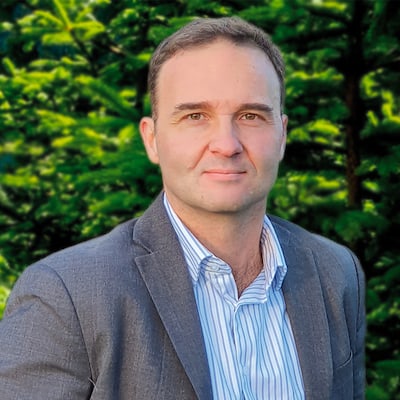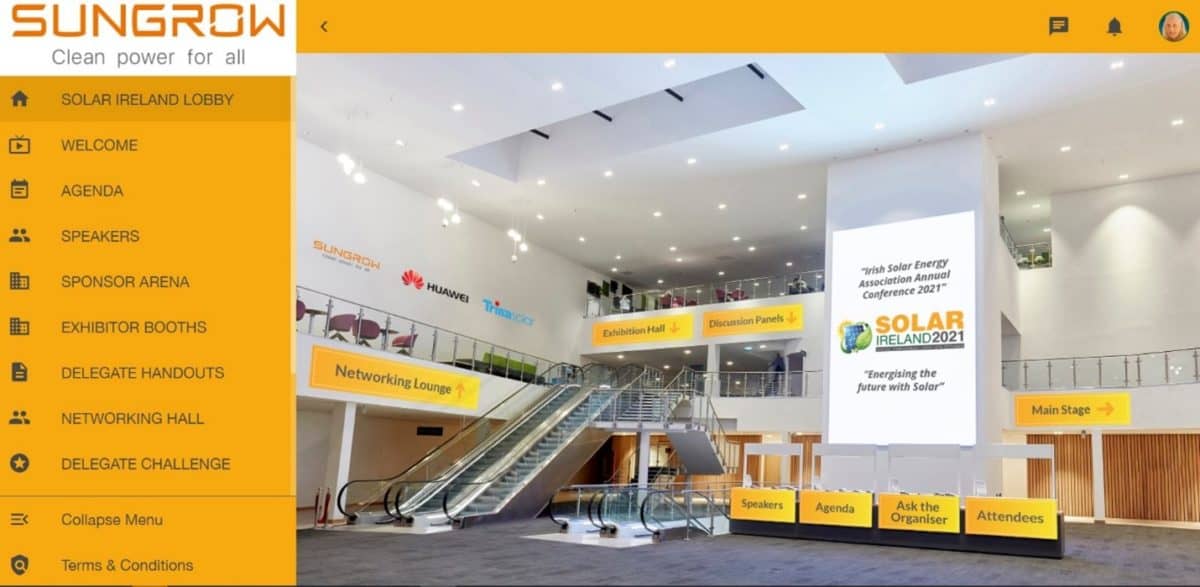
Carlos Galvan
The Solar Ireland 2021 virtual conference was organized by the Irish Solar Energy Association (ISEA) and held 14 -15 October. This event bought together industry experts from home and abroad to discuss how a thriving solar industry in Ireland will be transformative in terms of job creation and investment. There were 320+ registered at the conference, with virtual exhibition booths remaining live for 12 months allowing all attendees to network long after the conference has officially concluded.
It’s getting hot in here
According to a recent climate watchdog analysis from Climate Action Tracker (CAT), our planet is on track for at least 2.4 degrees Celsius of warming above pre-industrial levels by 2030. CAT also found that while the net-zero goals of 40 countries account for 85% of global emissions cuts, only 6% of those were backed up by concrete plans.
Solar is starting to heat up in Ireland
The International Renewable Energy Agency estimated Ireland had 40 MW of grid-connected solar capacity at the end of 2020, with fossil fuels still meeting around half of Ireland’s power demand.
As plans are being formulated to address increasing solar capacity, this year is especially significant for solar in Ireland as the government continues to implement and award the first-ever support for the industry in the form of a Renewable Electricity Support Scheme (RESS). Due to RESS-1, 63 solar projects totaling 796 megawatts were awarded contracts. This is a start at least.
Slow start requires more collaborative action

Solar Ireland 2021’s virtual lobby and conference platform
I was pleased to attend the Irish Solar Energy Association conference last month, but I struggled to see clear determination, concrete actions or joined-up thinking from political classes, regulators or system operators, all of which hold the key to addressing and solving this worrying situation.
I enjoyed listening to the different speakers, but there was a thought I could not shake from my head: “We are in the middle of a climate emergency, and every emergency requires an emergency response.” I kept thinking that we are not doing enough, and we are not doing it quickly enough. I am talking about grid connections and, more specifically, about grid connection costs. Grid connections have always been a key factor. Without a feasible grid connection, there is no finance and there is no project.
The last word is with the system operator as the eventual owners of the grid assets. However, unfortunately, we have run out of time and need to rethink how the network can be developed and delivered faster and cheaper.
There is (sun)light on the horizon
I am still hopeful that the system operators will reconsider their position about ‘T-connections’, and I am also looking forward to hearing about a new more realistic and dynamic approach when it comes to assessing spare capacity on existing transformers and lines, considering actual weather patterns and real-time demand vs generation data. I am also dreaming about newer 110kV and 220kV substation specifications that would allow developers to build their renewable generation projects faster and more economically.
Private wires would be a game-changer too. They could allow small projects to become part of bigger ones therefore improving their financial model, making them feasible. They would also reduce grid connection length and associated costs and allow a direct physical connection between ‘end user’ and renewable generation under certain conditions too.
I am quite happy with the action items included in the Climate Action Plan published by the government this week; it looks like finally, the ship is starting to turn.
If you missed The Solar Ireland 2021 conference or were not able to stop by our stand, we’d still love to speak to you about your upcoming projects.
Please get in touch with us to find out how PSC can help achieve your net-zero targets.
